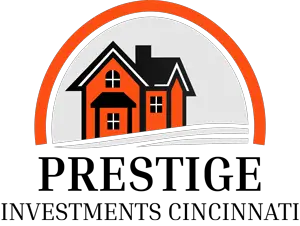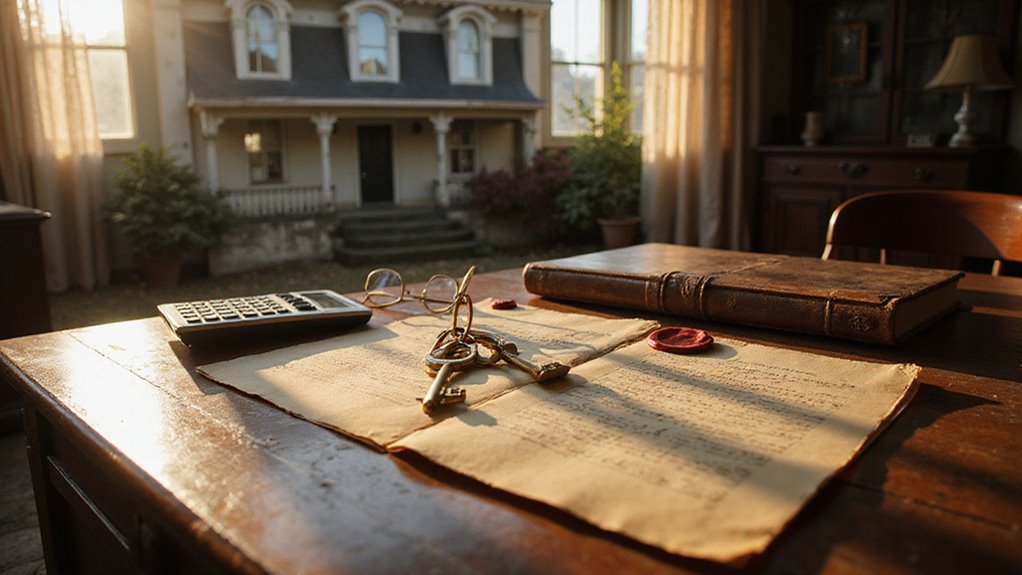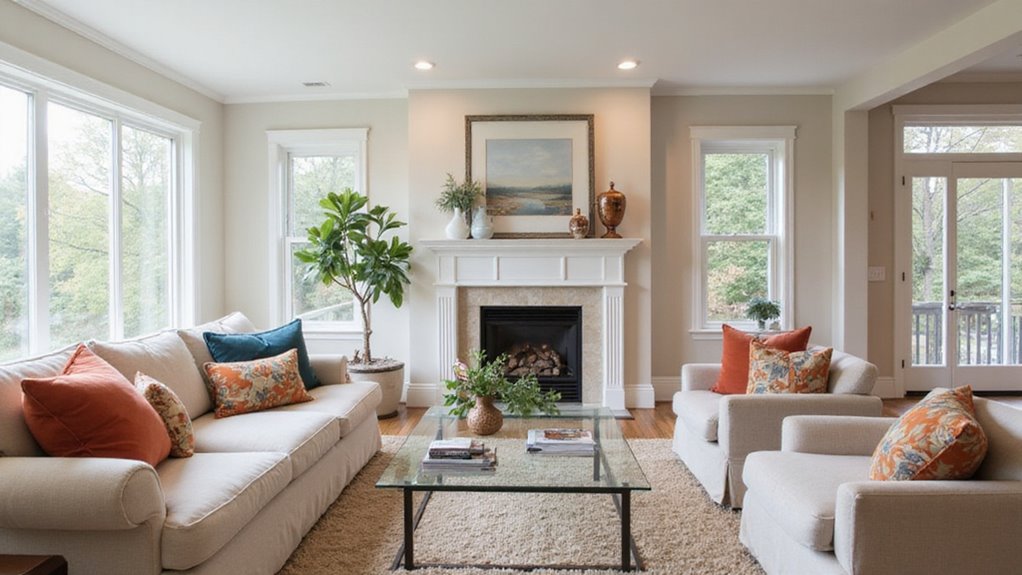Empty rooms whisper doubt while staged spaces tell compelling stories of possibility. Many homeowners wonder if investing in staging is worth the time and expense. Potential buyers often struggle to envision themselves in an empty or cluttered space, leading to hesitation and lower offers. Effective staging creates an emotional connection, transforming skeptical viewers into excited bidders.
Staging absolutely helps sell houses faster and for significantly better prices. Professional staging typically results in homes selling 73% quicker than non-staged properties and commanding 5-10% higher sale prices. This investment pays dividends by highlighting your home’s best features while minimizing flaws. Buyers can more easily picture themselves living in well-staged spaces, reducing decision friction.
In this blog I will explore everything about home staging’s impact on selling success and value-maximizing strategies.
Key Takeaways
- Staged homes sell approximately 73% faster than unstaged homes.
- Proper staging can increase a home’s selling price by 5-10%.
- Staging helps buyers visualize living in the space, speeding up decision-making.
- Professionally staged homes often attract more interest and higher offers.
- Investing in staging yields an average return of 8-10 times the cost.
Does Home Staging Really Impact Sales?

Yes, home staging significantly affects home sales. Staging creates visual appeal that attracts more potential buyers.
Staged homes sell 73% faster than unstaged ones—typically 23 days versus 184 days.
Properties with professional staging often command 5-10% higher selling prices. This investment typically pays off handsomely.
Buyers connect emotionally with staged homes. They can visualize themselves living in the space more easily.
Furthermore, professional staging typically delivers an 8-10x return on investment.
In essence, staging transforms empty houses into inviting homes that sell faster and for more money.
What Is Home Staging?
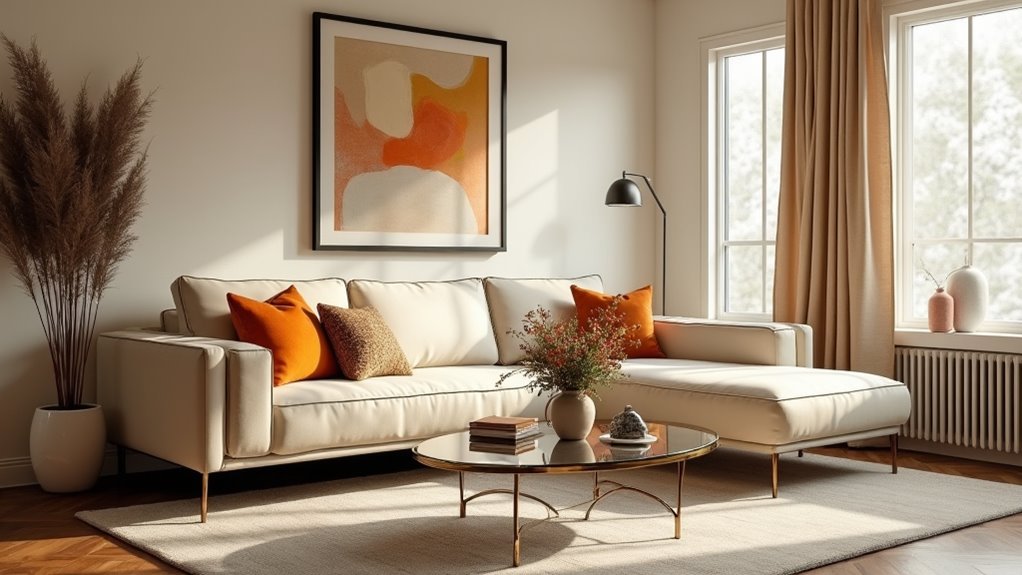
Home staging involves preparing your home to appeal to buyers by arranging furniture, decor, and accessories to highlight its best features.
Unlike decorating for personal taste, staging aims to create a neutral, inviting space that sells faster and for more money.
You can hire professionals or do it yourself, but effective staging requires strategic planning to maximize your home’s appeal.
Definition and Purpose of Home Staging
Home staging prepares a property to appeal to the widest range of potential buyers. It involves arranging furniture and decor to showcase a home’s best features.
Professional stagers remove personal items and excess clutter to create a neutral, welcoming space. The main goal is to help buyers envision themselves living in the home.
Staged homes typically sell 73% faster than non-staged properties. This process transforms spaces into marketable products rather than personal homes. Furthermore, strategic staging can highlight architectural features while minimizing flaws.
As a result, sellers often receive higher offers and experience less time on market.
Difference Between Staging and Decorating
Staging prepares a property for sale while decorating creates a personal living space. Staging focuses on appealing to potential buyers by neutralizing and decluttering spaces. A professional stager helps showcase the property’s best features to maximize sale potential. The goal is to help buyers envision themselves living there.
In contrast, decorating reflects the homeowner’s personal style and preferences. Decorators work with clients to express individuality through color schemes, furniture, and accessories.
Home staging typically increases sale prices by 1-10% compared to unstaged homes. Furthermore, staged homes often sell faster in competitive markets.
The investment in staging usually provides significant returns when selling a property. Buyers can more easily connect with a well-staged home.
Professional vs. DIY Staging
Both options have merit depending on your situation.
Professional staging costs more but delivers faster results. Professional staging costs around $1,776 on average but can sell homes 73% faster than unstaged homes.
Professionals bring specialized expertise and market knowledge to your staging project. They’ve access to high-quality furniture and decor that enhances appeal. Your home typically appears more polished with professional help.
For budget-conscious sellers, DIY staging can work well.
However, consider the value of time saved and potential for a quicker sale. In competitive markets, professional staging often provides a significant advantage.
How Does Staging Affect Buyer Psychology?
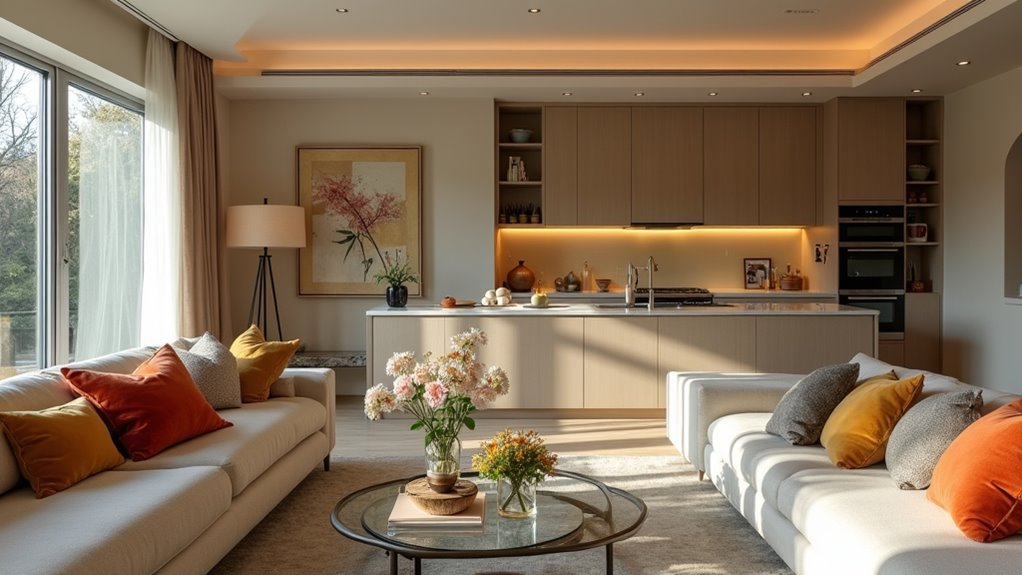
Staging creates a strong first impression and helps buyers form an emotional connection to the home.
When spaces are well-presented, buyers can more easily visualize themselves living there, reducing uncertainty.
Additionally, staging can boost perceived value, encouraging buyers to see the home as worth more and make higher offers.
First Impressions and Emotional Connections
Home staging creates powerful emotional connections with potential buyers. It transforms empty spaces into inviting environments that spark imagination. Over 82% of agents confirm that staging helps buyers visualize a property as their future home.
Staging highlights a property’s strengths and minimizes its weaknesses. The emotional impact of staging can’t be underestimated. Buyers often make decisions based on feelings rather than logic.
Well-staged homes appear more valuable and well-maintained. This emotional connection frequently leads buyers to overlook minor flaws they might otherwise notice.
Visualization of Living Space
Staging helps potential buyers envision a property as their future home. It transforms empty rooms into visually appealing living spaces that trigger emotional connections. Research shows 77% of buyers can better imagine themselves living in a staged home. This visualization creates a powerful impact on purchasing decisions.
The benefits extend to both parties in the transaction. Sellers often experience faster sales and higher offers when homes are properly staged.
Buyers gain clarity about how they might use the space. As a result, the decision-making process becomes smoother and more confident.
Furthermore, strategic staging highlights a property’s best features while minimizing potential drawbacks.
Perceived Value Enhancement
Home staging significantly increases perceived value by creating spaces buyers can envision as their own. Effective staging fosters emotional connections with potential buyers. It highlights a property’s best features while minimizing any flaws. Many buyers make decisions based on first impressions and emotional responses.
The right staging transforms a house into a lifestyle opportunity. Properties that are professionally staged sell for 1-5% more than unstaged homes. Buyers often struggle to visualize empty spaces. Strategic furniture placement makes rooms appear larger and more functional.
For best results, focus on decluttering, depersonalizing, and creating neutral but warm environments. This approach helps buyers imagine their own lives unfolding in the space.
What Do the Statistics Say About Staged Homes?
Statistics show that staged homes sell for 5-10% more and 73% faster than unstaged properties.
You can expect a high return on investment, often eight to ten times what you spend on staging.
Additionally, staged homes typically spend about 23 days on the market, compared to 184 days for unstaged ones.
Impact on Sale Price
Staged homes typically sell for 5-10% more than unstaged ones. This price increase makes staging a worthwhile investment for sellers.
Professional staging can increase offers by 1-5% and sometimes up to 10% according to real estate agents.
Staged properties also sell 73% faster than non-staged homes. This quicker timeline reduces carrying costs and stress for homeowners.
Many staged homes receive offers at or above asking price.
The return on investment for staging is substantial. For a modest upfront cost, sellers often recoup several times their staging investment through higher final sale prices.
Consider professional staging as a strategic selling tool rather than an optional expense.
Days on Market Comparison
Staged homes sell about 161 days faster than unstaged ones.
Staged homes typically remain on the market for just 23 days compared to 184 days for unstaged properties.
This dramatic difference benefits everyone involved in the transaction. Buyers find their dream homes more quickly without extended searching.
Sellers avoid the stress of prolonged listings and carrying costs. Quick sales also reduce the likelihood of price reductions.
Real estate agents can serve more clients efficiently and maintain a steady business flow.
For maximum results, professional staging should be completed before listing photos are taken.
ROI of Home Staging
The return on investment for professional home staging is typically 8-10 times the initial cost.
Staged homes sell 73% faster and command 5-10% higher sale prices than non-staged properties. This makes staging a worthwhile expense for most sellers.
Home staging creates an immediate positive impression on potential buyers. They can visualize themselves living in the space more easily.
Professional staging highlights a property’s best features while minimizing flaws.
Beyond financial returns, staging reduces the stress of a prolonged selling process. Your home spends less time on the market.
Additionally, staged homes attract more qualified buyers and generate better online listing photos.
How to Stage Your Home Effectively for a Quick Sale
Start by decluttering and depersonalizing your home to help buyers picture themselves living there.
Make necessary repairs and updates to ensure everything looks fresh and functional, focusing on key areas like the kitchen and living room.
Finally, improve curb appeal and maximize natural light to create an inviting, spacious atmosphere that appeals to buyers immediately.
Decluttering and Depersonalizing
Decluttering and depersonalizing prepare your home for quick sale by making it appealing to buyers. Remove excess items from all spaces to make rooms look larger and cleaner. This includes closets, cabinets, and storage areas buyers will inspect.
Clear personal items such as family photos and mementos from visible areas. Additionally, neutralize your decor with simple, tasteful choices.
Homes with neutral walls and minimal decor typically sell 15-20% faster than personalized spaces. As a result, buyers can mentally move in and envision their own lives there. This psychological advantage increases their emotional connection to your property.
Making Repairs and Updates
Repairs and updates significantly increase your home’s value before listing. Fix small problems like leaky faucets first.
Replace outdated fixtures next. Focus on high-impact areas for the best return.
Kitchen improvements deliver the strongest results. Modern appliances and countertops can boost your return on investment by up to 10%.
Bathroom updates create immediate buyer interest. Fresh grout and new fixtures make these spaces appear well-maintained.
Don’t overlook your home’s exterior. Properties with fresh paint and good landscaping sell 73% faster than homes without these improvements.
In other words, curb appeal matters tremendously to potential buyers.
Creating Neutral but Appealing Spaces
Neutral spaces help sell homes faster by appealing to more buyers. They create a blank canvas where potential owners can imagine their future. Neutral colors make rooms look larger and more inviting. The psychological effect helps buyers feel comfortable instantly.
To create these spaces, start by removing personal items and excess furniture.
Decluttering can make rooms appear up to 30% larger to visitors.
Choose light paint colors like beige, gray, or soft white for walls. Focus your staging efforts on the kitchen, living room, and primary bedroom.
As a result, your home will attract more offers and potentially sell for a higher price.
Moreover, buyers can move in without immediate renovations.
Enhancing Curb Appeal
Good curb appeal helps homes sell faster by making strong first impressions. Start with basic lawn care and remove any yard clutter.
Paint your front door a bold color that complements your home’s exterior. Clean your windows until they sparkle. Additionally, add potted plants near the entrance for a welcoming touch.
For maximum impact, ensure your house numbers are visible and attractive. Consider installing new outdoor lighting fixtures.
Most buyers make decisions within seven seconds of seeing a home’s exterior. These simple improvements can significantly increase buyer interest without major expenses.
Maximizing Space and Light
Neutral colors and strategic furniture placement create the illusion of larger, brighter spaces. Cream, beige, and soft gray walls reflect more light throughout rooms.
Position furniture away from walkways and windows to improve flow and natural light access. Additionally, mirrors amplify available light when placed across from windows.
Home staging with proper lighting can increase perceived value by up to 10%. Well-lit homes photograph better for online listings.
For best results, remove unnecessary furniture and declutter all surfaces. This simple approach helps potential buyers envision themselves living in the space.
What Are the Most Important Areas to Stage?
Focus on staging the living room, since nearly half of buyers see it as key to their emotional connection.
Don’t overlook the kitchen and master bedroom, which significantly influence perceptions of value and comfort.
Enhancing outdoor spaces and entryways can also boost curb appeal and make a strong first impression.
Living Room Staging Priorities
Focus on the living room first when staging your home. Buyers consider the living room critical, with 47% saying it influences their purchase decision.
Start by removing excess items and organizing furniture strategically. Choose neutral colors for walls, furniture, and décor to create a welcoming atmosphere.
Arrange your furniture to showcase spaciousness and natural movement through the room. This setup helps buyers envision themselves living there.
As a result, proper staging typically leads to faster sales and higher offers.
Kitchen and Bathroom Focus
Kitchens and bathrooms deserve priority when staging a home. These spaces heavily influence buyers’ decisions and perceived property value.
Clean countertops, organized cabinets, and updated fixtures make these areas shine. Buyers pay special attention to kitchen functionality and bathroom cleanliness when touring homes.
Homes with staged kitchens and bathrooms sell up to 40% faster than unstaged properties. Potential buyers often base their offers on these critical spaces.
Modern appliances and spotless bathrooms create positive impressions that last. Furthermore, these rooms represent significant renovation costs if outdated.
Master Bedroom Presentation
Properly staging your master bedroom creates a powerful impression on potential buyers. Focus on neutral colors with minimal personal items to help buyers envision themselves in the space. Fresh bedding, fluffed pillows, and neatly organized closets make the room feel luxurious and well-maintained.
Buyers often value master bedrooms as the second most important room after kitchens. A professional stager can suggest optimal furniture placement and lighting. This investment typically pays off through faster sales at better prices.
The bedroom should feel peaceful and spacious. Remove excess furniture and ensure pathways are clear.
Natural light enhances the appeal, so open curtains during showings whenever possible.
Outdoor Spaces and Entryways
First impressions matter when selling your home. A well-maintained yard, patio, and entryway can attract more buyers immediately. Homes with staged outdoor spaces sell up to 20% faster than those without.
The entrance should feel welcoming and clean. Remove personal items and ensure walkways are clear of obstacles.
Well-designed outdoor areas help buyers envision relaxing and entertaining in the space. Additionally, simple improvements like fresh mulch, potted plants, and a new welcome mat offer excellent return on investment.
Furthermore, outdoor lighting enhances both safety and curb appeal during evening showings.
How Much Does Professional Home Staging Cost?
Home staging costs vary based on the services you choose and your home’s size, typically ranging from around $784 to over $2,800.
You can opt for partial staging to target key areas or full staging for a complete makeover, which costs more but might boost your sale price.
Virtual staging offers a budget-friendly alternative that can still attract buyer interest without the physical setup expenses.
Price Ranges and Services
Home staging costs vary based on the scope of work needed. Basic staging consultations start at $675, while full staging runs around $2,812.
Larger homes may cost over $7,200 to stage completely. These prices reflect different service levels available to sellers.
Basic consultations provide recommendations without physical staging. Full staging includes furniture rentals and complete property preparation.
Additional fees apply for extended rental periods or custom design requests.
The investment typically pays off through faster sales and higher offers. Most professional stagers offer flexible packages to accommodate different budgets and needs.
Partial vs. Full Staging Options
Partial staging costs less but focuses on key areas, while full staging creates a complete look throughout the home.
Partial staging targets the living room, kitchen, and master bedroom for maximum impact. The cost ranges from $784 to $2,000 for partial staging and $675 to $2,812 for full staging. Your budget and selling goals should guide this choice.
For extended selling timelines, furniture rental offers another option. This typically costs over $2,000 per month but provides flexibility for longer listing periods.
In most cases, focusing your budget on main living areas delivers the best return on investment.
Virtual Staging Alternatives
Virtual staging offers a cost-effective alternative to traditional staging. Virtual staging costs about $675, with total expenses ranging from $784 to $2,812 depending on property size.
You can rent furniture digitally to improve your listing’s appeal online. Many sellers combine virtual staging with minor DIY improvements for better results.
Professional virtual staging services deliver quick, impressive transformations without physical furniture.
For instance, empty rooms can be digitally furnished to help buyers visualize the space. This approach serves clients efficiently while keeping costs manageable.
As a result, your listings appear more attractive to potential buyers.
Is Staging Worth It for Cash Home Sales?
Staging can boost your home’s appeal even if it’s an as-is property, but you need to weigh the costs against the powerful increase in sale price and speed.
For cash sales, quick turnover often matters more, so consider whether partial staging or simple repairs deliver enough return.
Sometimes, alternative methods like decluttering and strategic upgrades can achieve similar results without the full investment.
Staging Considerations for As-Is Properties
Effective staging transforms as-is properties into appealing homes that sell faster. Focus first on highlighting the property’s best features through strategic furniture placement and lighting.
Clean, declutter, and neutralize spaces to help buyers envision themselves living there. Staging costs typically range from $500-$2,000 but can increase sale prices by 5-10%.
For maximum impact, address curb appeal with simple landscaping and fresh paint where possible.
Additionally, create defined spaces that showcase potential uses for each room. Many cash buyers still want to see a home’s possibilities before making offers.
Balance of Investment vs. Return
Home staging typically returns 8-10 times its cost. Staged homes sell for 5-10% more and move 73% faster than non-staged properties.
This creates two key financial benefits for sellers. First, you earn more from the final sale price. Second, you reduce holding costs by selling faster.
The math is simple. A modest staging investment can add thousands to your profit. This applies especially to cash sales where presentation makes a significant difference.
Professional staging highlights your home’s best features while minimizing flaws.
For most sellers, staging offers excellent value compared to its upfront cost.
Alternatives to Full Staging for Quick Sales
Quick sales require only minimal staging. Focus on three key strategies for fast results without full staging costs.
Clean thoroughly, remove personal items, and declutter all spaces. Target the living room and kitchen first, as buyers spend 40% more time in these areas.
A fresh coat of paint and basic repairs can increase your offer by thousands.
Consider renting a few statement furniture pieces if your home is empty. These small investments typically yield a 5-10% higher selling price.
Most importantly, create a neutral backdrop that helps buyers envision their future in the space.
Ready to Sell Your Cincinnati Home Fast? Contact Prestige Investments Cincinnati Today
Prestige Investments Cincinnati can help you sell your home quickly. We specialize in fast home sales throughout the Cincinnati area.
Homes staged by professionals sell 73% faster and often above asking price. This proven strategy highlights your property’s best features effectively. The investment typically ranges between $784 and $2,812.
This investment can yield a 5-15% return on your final sale price.
Furthermore, our team knows how to showcase your home’s strengths to potential buyers. We handle all the details so you don’t have to worry.
As a result, you’ll experience a smoother selling process with less stress.
Frequently Asked Questions
What Is the Disadvantage of Home Staging?
You might face high costs, inconvenience, and ongoing expenses from staging, which may not always lead to a sale or higher price. Miscommunications can cause dissatisfaction, and local regulations could limit your staging options, complicating the process.
Is It Important to Stage a House for Sale?
You should stage a house because it transforms your property into a welcoming story that buyers can envision themselves in, boosting their emotional connection and trust, ultimately helping you serve their needs and sell faster for more.
Do Homes Sell Better, Staged or Empty?
You’ll sell your home faster and for more money if you stage it. Staged homes attract more inquiries, help buyers visualize living there, and often close 20% quicker, making the process smoother for everyone involved.
What Devalues a House the Most?
Clutter, poorly maintained fixtures, outdated appliances, personal decor, and exterior neglect devalue your house most. These issues hinder buyer visualization, reduce perceived value, and can cause longer market times, so address them to maximize your sale effectiveness.
